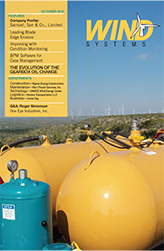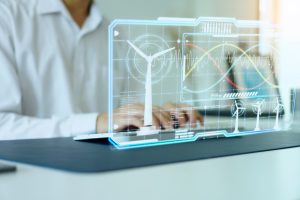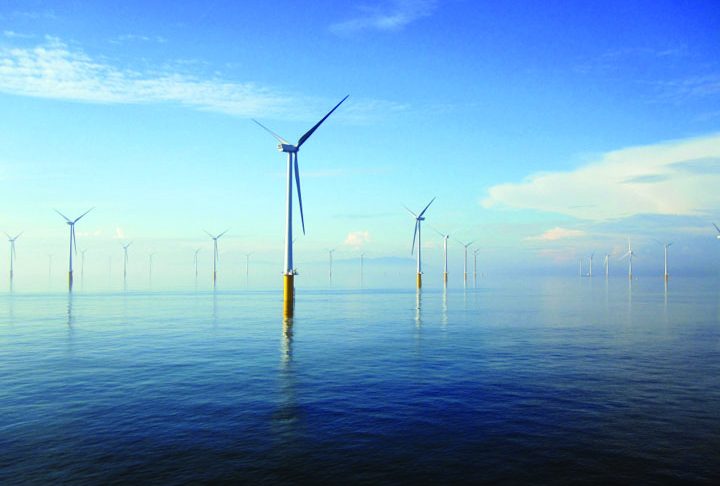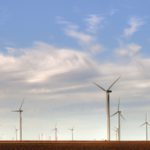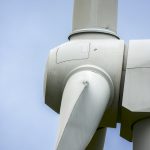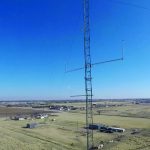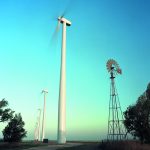Offshore wind turbines continue to grow, with the latest technology having rated powers of six to seven MW, and rotor diameters as large at 150 meters. There are a number of factors driving this growth, in particular the desire to increase the energy capture per offshore support structure. Because of the high fixed cost associated with an offshore support structure, including installation with specialized vessels and interconnection, the economics of offshore wind make maximizing energy capture, and thus rotor diameters, an imperative. This drive towards larger rotors applies to both fixed and floating offshore turbines. Moreover, the architecture of offshore wind turbines has converged to the industry standard three-bladed, upwind, horizontal axis configuration.
Increasing the size of wind turbine rotors, however, also presents significant engineering challenges. Manufacturing a 75-meter blade, installing it offshore, and then ensuring its reliable operation in the offshore environment is extremely difficult, and requires a wide range of engineering disciplines from material science to aerodynamics and controls. These challenges have led to a number of possible conceptual solutions that differ from the standard three-bladed, upwind, horizontal axis architecture. These solutions include segmented blades, vertical axis turbines, and downwind oriented rotors, all of which offer various advantages and drawbacks.
Another solution to capture more energy per offshore support structure is to have multiple rotors on a single support structure. Researchers at UMass Amherst (Professor Manwell and Professor Lackner) are investigating this multi-rotor concept and analyzing its potential. As far as can be determined, Hermann Honnef of Germany was the first person to propose multi-rotor wind turbines more than 80 years ago, and the idea appeared again in the 1950s in work of the American Percy Thomas. The first detailed conceptual designs for multi-rotor offshore wind turbines can be traced back over 40 years, to Professor William Heronemus at UMass Amherst in the early 1970s. At that time, technical limitations in blade construction necessitated relatively small rotors, and so the only apparent solution for large scale offshore wind entailed a multi-rotor turbine, in which multiple rotors are supported by a super-structure that sits on top of an offshore support sub-structure such as a monopile or floating platform. The concepts developed at the time ranged from two or three rotors per support structure, to well over ten rotors.
While the current motivation for employing a multi-rotor turbine has evolved compared to 40 years ago, many of the inherent benefits of such a solution have remained. Multi-rotors have built-in redundancy by definition, and so if a single subsystem fails, e.g. a blade pitch actuator, the remaining rotors can operate normally and still produce power. Thus, there is the possibility for partial availability for a multi-rotor and a reduced number of trips for maintenance. This could be especially beneficial in locations where offshore access is limited for much of the year. Another potential advantage of a multi-rotors turbine is that each rotor operates in a relatively more uniform flow field (compared to a standard single rotor), with less shear and turbulence variations across the rotor face. This may allow each turbine to operate more efficiently, resulting in a higher overall energy output for the identical total swept rotor area.
Multi-rotor turbines also present additional complexities, most notably the super-structure that must support each rotor and connect to the offshore support structure. The cost and mass of the super-structure must be accounted for in assessing the overall economic tradeoff. Furthermore, controlling the yaw of either individual rotors or the entire super-structure for a multi-rotor turbine is a challenging design issue.
The research conducted at UMass Amherst so far has investigated the relative mass and cost of a multi-rotor system versus a standard configuration. Using scaling laws developed at the National Renewable Energy Laboratory (NREL), which defines relations for the mass and cost of the major components of a wind turbine as a function of scale, the overall mass and cost of a single 5 MW rotor was compared to a variety of multi-rotor configurations. The multi-rotor configurations varied in terms of number of blades per rotor, and number of rotors. As an example, it was determined that the overall mass of the rotor-nacelle assemblies of a multi-rotor configuration with three rotors of three blades each would be 10% less or more than that with an equivalent single rotor, and the cost would be significantly lower as well. The major caveat of this analysis is that the super-structure mass and cost has not been estimated.
















